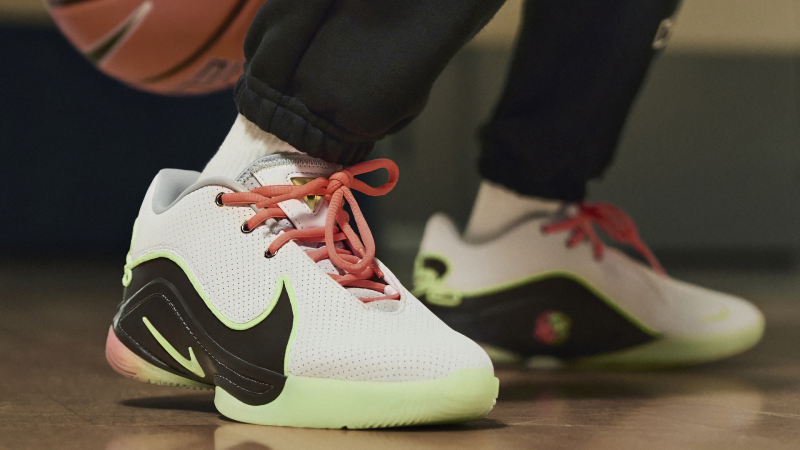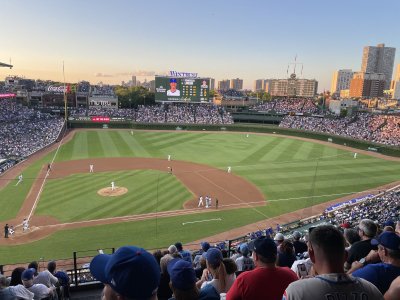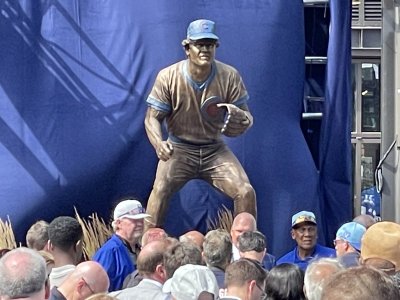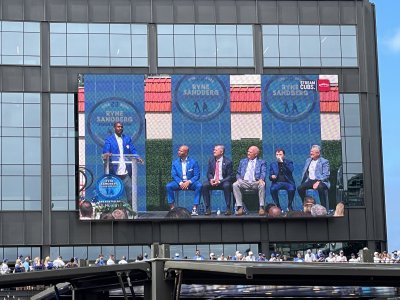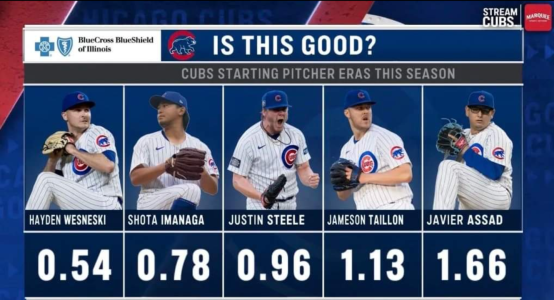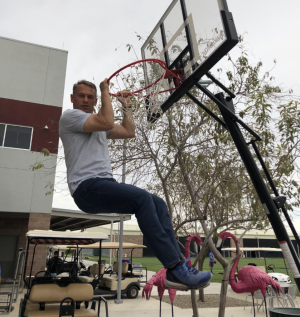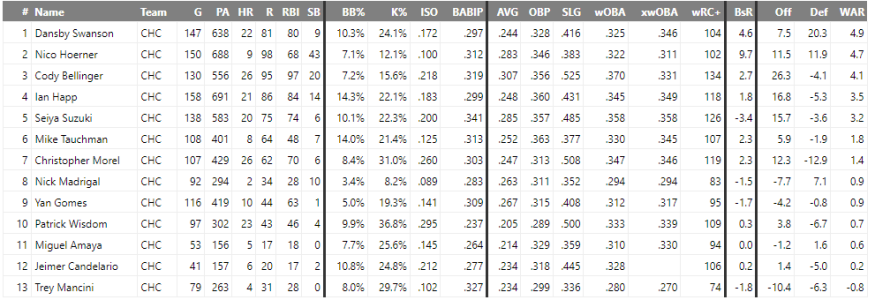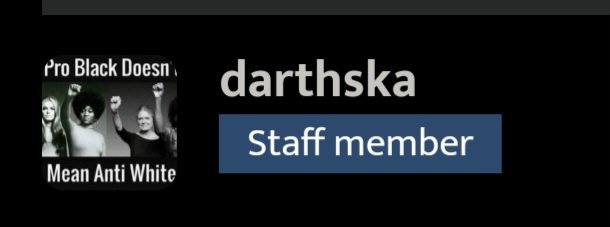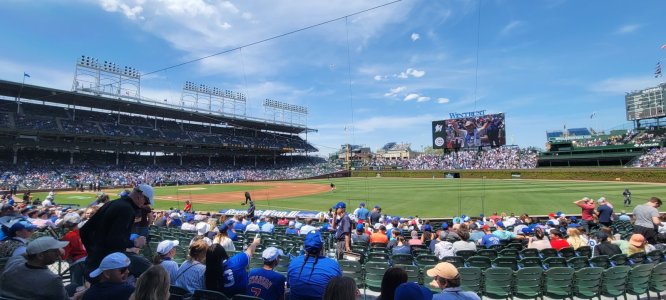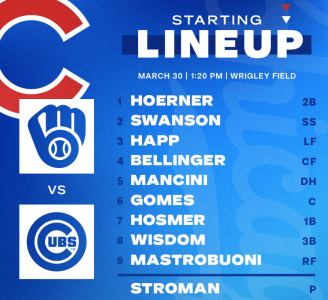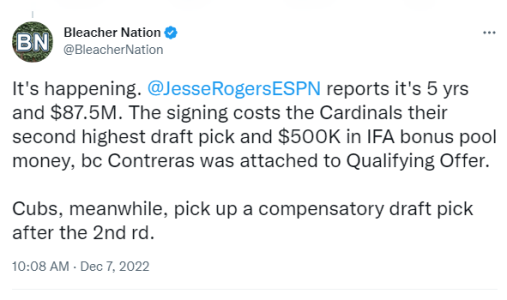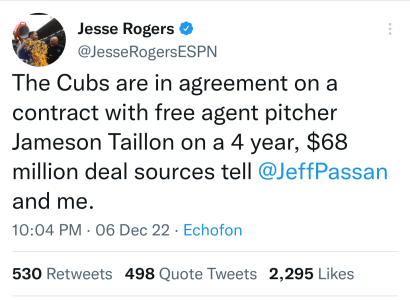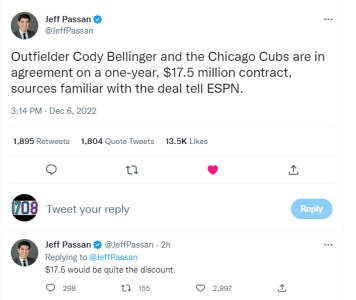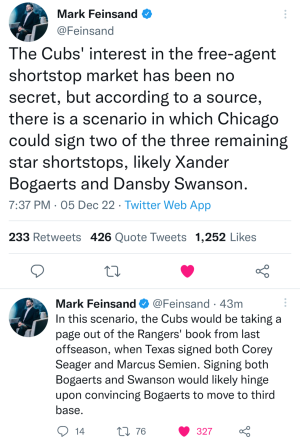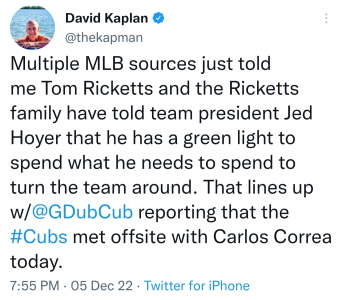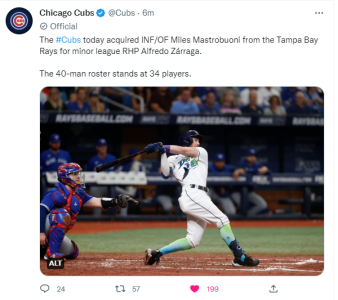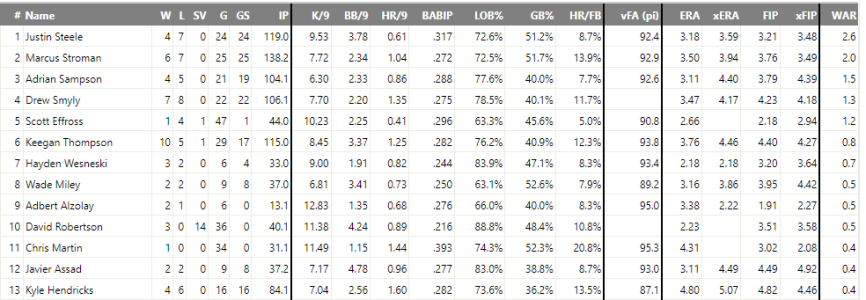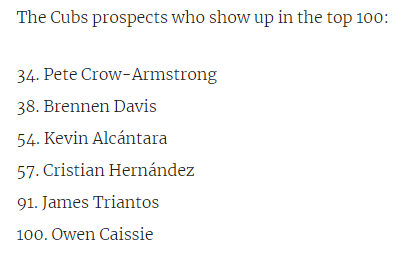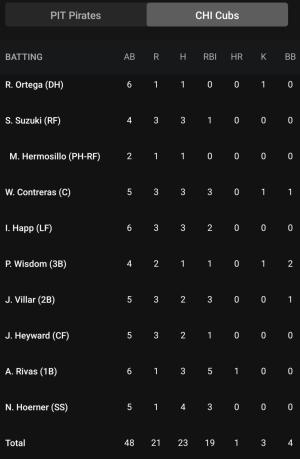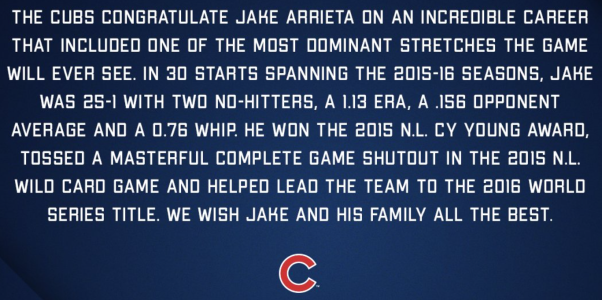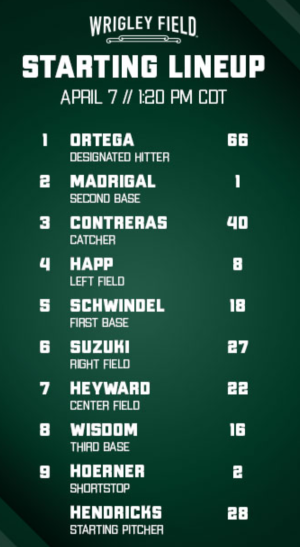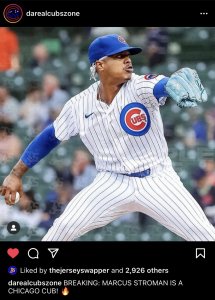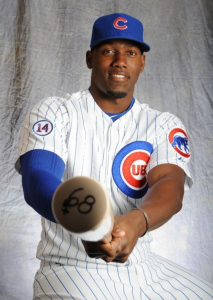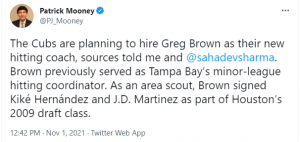Navigation
Install the app
How to install the app on iOS
Follow along with the video below to see how to install our site as a web app on your home screen.
Note: This feature may not be available in some browsers.
More options
You are using an out of date browser. It may not display this or other websites correctly.
You should upgrade or use an alternative browser.
You should upgrade or use an alternative browser.
Official 2023 Chicago Cubs Season Thread Vol: (17-17)
- Thread in 'Sports & Training' Thread starter Started by CP1708,
- Start date
Lake Shore Drive
formerly slp product
- Feb 8, 2005
- 7,336
- 2,445
Good season overall. Glad we at least took one.
Nothing to hang our heads about. We made it to the NLCS 3x.
Time to start the arms race Theo.
Nothing to hang our heads about. We made it to the NLCS 3x.
Time to start the arms race Theo.
- Nov 21, 2004
- 1,229
- 860
Great season! They sone how some way got to the NLCS even with no offense to speak of. That's how good they are. I am not hating on them at all. It's been a hell of a ride past 3 years and I don't see it stopping anytime soon. Like it's been said tip your cap to LA. They were the better team this time. 2016 will forever be etched in my mind and heart. Great season Go Cubs Go! Until 2018....
Sonny Corinthos
formerly joeclear
- Nov 22, 2008
- 18,391
- 9,946
Look out for the Mets next season
- Nov 5, 2016
- 37
- 23
Tough way to go down but it was a hell of an uphill battle all season. The Cubs are still a proven legit contender and the league recognizes it. Great season
A year ago, the Cubs were baseball’s most dominant team, first putting up 103 regular-season wins and then capping the achievement with their first World Series win in 108 years. (So I was told a few times along the way.) The question wasn’t whether the 2016 Cubs were the best team in baseball — that was obvious — but whether the 2016 Cubs were one of the best baseball teams we’ve ever seen.
No one is going to ask that question of the 2017 Cubs.
This year’s version certainly wasn’t a bad team by any stretch of the imagination. They won 92 games, took the NL Central title again, and were only eliminated in the NLCS when they ran into a 105-win buzzsaw. They were fourth in the majors in runs scored and seventh in runs allowed. The Cubs were clearly one of the best teams in baseball this year.
But compared to what they were a year ago, they looked vulnerable. The offense was still fine, led by a couple of the game’s best hitters, but the supporting cast mostly stagnated or regressed. Dexter Fowler‘s 128 wRC+ and solid defense in center was replaced by Kyle Schwarber‘s 102 wRC+ and weak defense in left. Ben Zobrist finally looked old, going from +3.9 WAR to +0.3 WAR. They lost +2.5 WAR from Addison Russell, who was supposed to be breaking out instead. Javier Baez was still the same guy as last year, which is okay but not the superstar for which people have hoped.
And then there was the pitching. Jon Lester failed to crack 190 innings for the first time in a decade while also allowing home runs at a rate unprecedented in his career. Jake Arrieta‘s regression continued, as he turned more into a good-stuff-with-bad-command guy rather than the ace he’d been previously. John Lackeywas the pitching staff’s version of Ben Zobrist, finally showing his age.
In the bullpen, everyone had flaws. Wade Davis, Carl Edwards Jr., and Pedro Strop were the reliable ones, and they combined for a 12% walk rate, foreshadowing the inability of anyone in Chicago’s bullpen to throw strikes in October. Hector Rondon and Koji Uehara threw strikes but gave up dingers. Mike Montgomery stopped missing bats, and Justin Wilson just fell apart after being acquired to shore up a shaky relief corps.
And the defense didn’t help nearly as much this year. The Cubs were special in 2016 because the club featured not only the best hitters but also the best fielders, too. This year, the defense was merely good. And with fewer batted balls landing in gloves, the pitching staff allowed 130 more runs than the previous season.
Living up to the 2016 standard was always an impossible task, but we were among the many looking at the Cubs as a potential dynasty in the making, and against that kind of expectation, this year’s Cubs team can’t help but feel like a bit of a disappointment. And while they get a clean slate next year and won’t have to deal with any World Series hangover effect, a lot of the things that went wrong for the Cubs in 2017 lead to questions about what is next for the franchise in 2018.
Arrieta, Davis, Lackey, Uehara, and Brian Duensing are all free agents, so the pitching staff is going to experience significant turnover. The position players are more stable, with only Alex Avila and Jon Jay hitting the open market, but that doesn’t mean things on that side are settled. The outfield, in particular, is kind of a mess, with a bunch of flawed candidates offering just enough upside to justify regular playing time, but no one from the group looking like an everyday guy.
If they want to play Ian Happ regularly, does he displace Schwarber or Heyward in a corner (unlikely on both counts) or do they again sacrifice defense and stick him in center? Will they platoon their two lefty-hitting corner outfielders, neither of whom probably provides enough value at this point to justify starting against most left-handed pitchers? Would they be better off with Happ at second base, potentially trading either Baez or Russell for an outfield upgrade?
Or, perhaps more likely, they could trade one of them for another starting pitcher. Right now, the rotation is Lester, Jose Quintana, and Kyle Hendricks, with pitching coach Chris Bosio probably as qualified as anyone else in the organization for the No. 4 spot. The system isn’t brimming with high-level pitching talent to plug the holes in the staff — which is why they traded for Quintana to begin with — and almost all of the team’s once-vaunted farm system is now either in the majors or has been traded for major-league upgrades.
So the team needs at least two starting pitchers, and given how many arms it takes to make it through 162 games these days, probably more like three or four. They’ll have money to spend, but maybe not enough to sign anyone they want: the organization will owe about $125 million to the 13 players either under contract for 2018 or eligible for arbitration and likely to be retained. The Cubs have spent about $170 million the last couple of years, so there’s cash to spend, but when you need two full-time rotation guys, a closer, and a bunch of solid pitching depth, $40-$50 million goes quickly.
There are obviously enough core pieces in place to just make some minor adjustments and still come back as the favorites in the NL Central. If they spread the money around and round out the depth pieces, they’ll likely project as a 90-win team again next year.
Or they could go all out, throwing $30 million per year at Yu Darvish in the hope that Shohei Otani decides to join him, believing there’d be enough pinch-hitting at-bats in the NL for him to hit most every day. Put Darvish and Otani in this rotation, and all of the sudden, the Cubs look like the scariest team in the land once again.
Of course, it’s pretty likely the Cubs wouldn’t be the only team with that plan this winter, and there’s no guarantee they’d get either, much less both. And if they ended up with Darvish but not Otani, they’d be an injury away from long-term disaster, with too much money going to declining (or already declined) players who weren’t capable of supporting the team’s two stars. Betting big on aging free-agent pitchers to fix your organization isn’t generally a great idea, after all.
So the Cubs, who were supposed to be set for the next few years, might already be at a crossroads. At the very least, they’re likely going to be forced to decide whether Baez/Russell is their middle-infield tandem for years to come or whether they need to use one of the two to upgrade elsewhere. And with so many holes to fill on the pitching side of things, the choices the front office makes this winter could have a significant impact on whether the team’s hopes of multiple titles from this core comes to pass or whether 2016 represented the moment at which the organization peaked.
A year ago, it looked like the Cubs could mostly just put things in cruise control and win their division for the next half-decade. A year later, it’s clear the Cubs have some legitimate issues to try and resolve this winter. The front office will be tasked with upgrading an already flawed team while also likely saying goodbye to several of their better performers. Getting back to being a behemoth isn’t going to be easy.
No one is going to ask that question of the 2017 Cubs.
This year’s version certainly wasn’t a bad team by any stretch of the imagination. They won 92 games, took the NL Central title again, and were only eliminated in the NLCS when they ran into a 105-win buzzsaw. They were fourth in the majors in runs scored and seventh in runs allowed. The Cubs were clearly one of the best teams in baseball this year.
But compared to what they were a year ago, they looked vulnerable. The offense was still fine, led by a couple of the game’s best hitters, but the supporting cast mostly stagnated or regressed. Dexter Fowler‘s 128 wRC+ and solid defense in center was replaced by Kyle Schwarber‘s 102 wRC+ and weak defense in left. Ben Zobrist finally looked old, going from +3.9 WAR to +0.3 WAR. They lost +2.5 WAR from Addison Russell, who was supposed to be breaking out instead. Javier Baez was still the same guy as last year, which is okay but not the superstar for which people have hoped.
And then there was the pitching. Jon Lester failed to crack 190 innings for the first time in a decade while also allowing home runs at a rate unprecedented in his career. Jake Arrieta‘s regression continued, as he turned more into a good-stuff-with-bad-command guy rather than the ace he’d been previously. John Lackeywas the pitching staff’s version of Ben Zobrist, finally showing his age.
In the bullpen, everyone had flaws. Wade Davis, Carl Edwards Jr., and Pedro Strop were the reliable ones, and they combined for a 12% walk rate, foreshadowing the inability of anyone in Chicago’s bullpen to throw strikes in October. Hector Rondon and Koji Uehara threw strikes but gave up dingers. Mike Montgomery stopped missing bats, and Justin Wilson just fell apart after being acquired to shore up a shaky relief corps.
And the defense didn’t help nearly as much this year. The Cubs were special in 2016 because the club featured not only the best hitters but also the best fielders, too. This year, the defense was merely good. And with fewer batted balls landing in gloves, the pitching staff allowed 130 more runs than the previous season.
Living up to the 2016 standard was always an impossible task, but we were among the many looking at the Cubs as a potential dynasty in the making, and against that kind of expectation, this year’s Cubs team can’t help but feel like a bit of a disappointment. And while they get a clean slate next year and won’t have to deal with any World Series hangover effect, a lot of the things that went wrong for the Cubs in 2017 lead to questions about what is next for the franchise in 2018.
Arrieta, Davis, Lackey, Uehara, and Brian Duensing are all free agents, so the pitching staff is going to experience significant turnover. The position players are more stable, with only Alex Avila and Jon Jay hitting the open market, but that doesn’t mean things on that side are settled. The outfield, in particular, is kind of a mess, with a bunch of flawed candidates offering just enough upside to justify regular playing time, but no one from the group looking like an everyday guy.
If they want to play Ian Happ regularly, does he displace Schwarber or Heyward in a corner (unlikely on both counts) or do they again sacrifice defense and stick him in center? Will they platoon their two lefty-hitting corner outfielders, neither of whom probably provides enough value at this point to justify starting against most left-handed pitchers? Would they be better off with Happ at second base, potentially trading either Baez or Russell for an outfield upgrade?
Or, perhaps more likely, they could trade one of them for another starting pitcher. Right now, the rotation is Lester, Jose Quintana, and Kyle Hendricks, with pitching coach Chris Bosio probably as qualified as anyone else in the organization for the No. 4 spot. The system isn’t brimming with high-level pitching talent to plug the holes in the staff — which is why they traded for Quintana to begin with — and almost all of the team’s once-vaunted farm system is now either in the majors or has been traded for major-league upgrades.
So the team needs at least two starting pitchers, and given how many arms it takes to make it through 162 games these days, probably more like three or four. They’ll have money to spend, but maybe not enough to sign anyone they want: the organization will owe about $125 million to the 13 players either under contract for 2018 or eligible for arbitration and likely to be retained. The Cubs have spent about $170 million the last couple of years, so there’s cash to spend, but when you need two full-time rotation guys, a closer, and a bunch of solid pitching depth, $40-$50 million goes quickly.
There are obviously enough core pieces in place to just make some minor adjustments and still come back as the favorites in the NL Central. If they spread the money around and round out the depth pieces, they’ll likely project as a 90-win team again next year.
Or they could go all out, throwing $30 million per year at Yu Darvish in the hope that Shohei Otani decides to join him, believing there’d be enough pinch-hitting at-bats in the NL for him to hit most every day. Put Darvish and Otani in this rotation, and all of the sudden, the Cubs look like the scariest team in the land once again.
Of course, it’s pretty likely the Cubs wouldn’t be the only team with that plan this winter, and there’s no guarantee they’d get either, much less both. And if they ended up with Darvish but not Otani, they’d be an injury away from long-term disaster, with too much money going to declining (or already declined) players who weren’t capable of supporting the team’s two stars. Betting big on aging free-agent pitchers to fix your organization isn’t generally a great idea, after all.
So the Cubs, who were supposed to be set for the next few years, might already be at a crossroads. At the very least, they’re likely going to be forced to decide whether Baez/Russell is their middle-infield tandem for years to come or whether they need to use one of the two to upgrade elsewhere. And with so many holes to fill on the pitching side of things, the choices the front office makes this winter could have a significant impact on whether the team’s hopes of multiple titles from this core comes to pass or whether 2016 represented the moment at which the organization peaked.
A year ago, it looked like the Cubs could mostly just put things in cruise control and win their division for the next half-decade. A year later, it’s clear the Cubs have some legitimate issues to try and resolve this winter. The front office will be tasked with upgrading an already flawed team while also likely saying goodbye to several of their better performers. Getting back to being a behemoth isn’t going to be easy.
A season after winning their first title in 108 years, the Chicago Cubs couldn’t recapture that same magic in 2017. They started off slow, suffering one of the worst hangovers ever for a defending champ, and struggled to fend off the upstart Milwaukee Brewers for most of the summer. Although Chicago did eventually start playing to its potential in the second half of the year, the Cubs needed an epic Washington Nationals meltdown (and maybe a little help from the umpires) to squeak their way into the NLCS, where they rarely seemed like fair competition for the Los Angeles Dodgers. It took five games for L.A. to officially end Chicago’s repeat bid, with the Dodgers winning 11-1 at Wrigley Field on Thursday night to finish the series.
Now Theo Epstein, Joe Maddon and the rest of the Cubs’ brain trust have five months to contemplate what went wrong in their team’s title defense.
They can start by looking at the bullpen, which blew game after game. One of the Cubs’ prize trade-deadline additions, reliever Justin Wilson, pitched only 0.2 innings in October, and many of Chicago’s other bullpen arms disappointed. Epstein was never able to assemble the stocked relief cabinet that other top playoff contenders, from the Dodgers to the Yankees, managed to collect.
But there’s plenty of blame to go around. The Cubs’ usually dynamic duo of Anthony Rizzo and Kris Bryant scuffled, and the whole lineup produced one of the worst offensive performances in the playoffs in decades. And in general, this roster wasn’t as talented as the one that steamrolled the league in 2016. Although a healthy Kyle Schwarber, who returned this season after missing all but two games last year with a torn ACL, should have offset the loss of Dexter Fowler, the returning slugger never hit as well as expected, and the offense took a small step back. On the other side of the ball, the Cubs’ incredible pitching and defensive performance last season fell back down to earth in 2017.
Even Maddon, who has a reputation as a tactical genius, showed signs that his strategic brilliance may be only skin deep. In the ninth inning of Game 2, Maddon made the controversial decision not to use ace closer Wade Davis, instead opting to hand the ball to starter-turned-postseason-reliever John Lackey, who had also pitched the night before — and the results were predictably disastrous. Lackey proceeded to give up a walk-off dinger to Dodgers third baseman Justin Turner, putting the Cubs in an 0-2 series hole from which they never recovered.
On its own, Maddon’s decision wasn’t as egregious as, for example, Orioles manager Buck Showalter sitting Zach Britton in the Wild Card contest last year. But it’s part of a pattern of less-than-stellar bullpen management for the Cubs skipper. Last season, Rian Watt and I created a bullpen-management statistic with which to grade managers, and Maddon has been surprisingly mediocre — 22nd out of 35 qualified skippers — in that aspect of the game over the past several years. (In fact, Maddon’s score was almost identical to Showalter’s.)
Other managerial metrics are similarly unkind to Maddon: He has oftenranked highly in former Grantland writer Ben Lindbergh’s managerial meddling index, which quantifies the degree to which coaches call for often-unwise tactics from the bench. So perhaps it was fitting that Merlot Joe’sreliever usage wasn’t the only questionable call he made this October. As sabermetrician Dave Cameron pointed out, Maddon’s calls — including setting the lineup and failing to pinch hit in several tight spots — were poor throughout Game 2.
This isn’t to say that Maddon is a bad manager. Despite the outsized importance that bullpen decisions acquire in the postseason, we found that they only tend to be worth a win or so over the full season. How a skipper manages his players’ egos and clubhouse chemistry is likely to be much more important than the fiddling he does with a lineup or the pitcher he calls on to get critical outs. And Maddon excels in those soft skills: He is famous for maintaining a relaxed, jovial clubhouse, and it shows in the outstanding performances of his players.
But this season, Maddon was unable to coax quite enough out of his roster. There is good news for Cubs fans: Several of the All-Stars from last season’s World Series-winning outfit will return again next year. Since the difference between the wild card winner and the World Series champion often comesdown to luck, the Cubs might only have to wait until next year — instead of 107 years from now — before they celebrate once again.
Now Theo Epstein, Joe Maddon and the rest of the Cubs’ brain trust have five months to contemplate what went wrong in their team’s title defense.
They can start by looking at the bullpen, which blew game after game. One of the Cubs’ prize trade-deadline additions, reliever Justin Wilson, pitched only 0.2 innings in October, and many of Chicago’s other bullpen arms disappointed. Epstein was never able to assemble the stocked relief cabinet that other top playoff contenders, from the Dodgers to the Yankees, managed to collect.
But there’s plenty of blame to go around. The Cubs’ usually dynamic duo of Anthony Rizzo and Kris Bryant scuffled, and the whole lineup produced one of the worst offensive performances in the playoffs in decades. And in general, this roster wasn’t as talented as the one that steamrolled the league in 2016. Although a healthy Kyle Schwarber, who returned this season after missing all but two games last year with a torn ACL, should have offset the loss of Dexter Fowler, the returning slugger never hit as well as expected, and the offense took a small step back. On the other side of the ball, the Cubs’ incredible pitching and defensive performance last season fell back down to earth in 2017.
Even Maddon, who has a reputation as a tactical genius, showed signs that his strategic brilliance may be only skin deep. In the ninth inning of Game 2, Maddon made the controversial decision not to use ace closer Wade Davis, instead opting to hand the ball to starter-turned-postseason-reliever John Lackey, who had also pitched the night before — and the results were predictably disastrous. Lackey proceeded to give up a walk-off dinger to Dodgers third baseman Justin Turner, putting the Cubs in an 0-2 series hole from which they never recovered.
On its own, Maddon’s decision wasn’t as egregious as, for example, Orioles manager Buck Showalter sitting Zach Britton in the Wild Card contest last year. But it’s part of a pattern of less-than-stellar bullpen management for the Cubs skipper. Last season, Rian Watt and I created a bullpen-management statistic with which to grade managers, and Maddon has been surprisingly mediocre — 22nd out of 35 qualified skippers — in that aspect of the game over the past several years. (In fact, Maddon’s score was almost identical to Showalter’s.)
Other managerial metrics are similarly unkind to Maddon: He has oftenranked highly in former Grantland writer Ben Lindbergh’s managerial meddling index, which quantifies the degree to which coaches call for often-unwise tactics from the bench. So perhaps it was fitting that Merlot Joe’sreliever usage wasn’t the only questionable call he made this October. As sabermetrician Dave Cameron pointed out, Maddon’s calls — including setting the lineup and failing to pinch hit in several tight spots — were poor throughout Game 2.
This isn’t to say that Maddon is a bad manager. Despite the outsized importance that bullpen decisions acquire in the postseason, we found that they only tend to be worth a win or so over the full season. How a skipper manages his players’ egos and clubhouse chemistry is likely to be much more important than the fiddling he does with a lineup or the pitcher he calls on to get critical outs. And Maddon excels in those soft skills: He is famous for maintaining a relaxed, jovial clubhouse, and it shows in the outstanding performances of his players.
But this season, Maddon was unable to coax quite enough out of his roster. There is good news for Cubs fans: Several of the All-Stars from last season’s World Series-winning outfit will return again next year. Since the difference between the wild card winner and the World Series champion often comesdown to luck, the Cubs might only have to wait until next year — instead of 107 years from now — before they celebrate once again.
Lake Shore Drive
formerly slp product
- Feb 8, 2005
- 7,336
- 2,445
^
Damn good work fam!!!
I can’t rep you enough for that. Thanks to everyone else who contributed to make this thread great. We are not done. We will reload and come back better than ever.
Damn good work fam!!!
I can’t rep you enough for that. Thanks to everyone else who contributed to make this thread great. We are not done. We will reload and come back better than ever.
- Sep 7, 2005
- 9,067
- 5,699
Sustained success and culture change. Thanks to Theo, it is a great time to be a Cubs fan
Lake Shore Drive
formerly slp product
- Feb 8, 2005
- 7,336
- 2,445
^
Just saw that as well.
I’m stunned!
I don’t know what to make of this. He’s done miracles with Jake and the rest of the staff, can’t really pin it all on him for the pen imploding.
Just saw that as well.
I’m stunned!
I don’t know what to make of this. He’s done miracles with Jake and the rest of the staff, can’t really pin it all on him for the pen imploding.
Lake Shore Drive
formerly slp product
- Feb 8, 2005
- 7,336
- 2,445
Interesting.
Looks like Joe made the move.
https://www.google.com/amp/www.chic...ing-coach-chris-bosio-20171021-story,amp.html
Looks like Joe made the move.
https://www.google.com/amp/www.chic...ing-coach-chris-bosio-20171021-story,amp.html
- Jul 10, 2005
- 1,288
- 65
Dont be surprised if some of the core pieces are let go this winter. Theo did the same with Boston. There was an article about it back then stating that by 2007 only a few players are left from the 04 team and so on. it also mentioned something along the lines of mgmt should not fall in love with players, and should be willing to let go and move on. if you look at the boston roster in 04, 07, & 13, complete overhaul. i think big papi is the only constant in those 3 champ teams.
- Jul 7, 2011
- 1,323
- 377
Doesn't make sense with this team though. These guys are still young and under contract for cheap.
- Sep 7, 2011
- 1,915
- 531
Sustained success and culture change. Thanks to Theo, it is a great time to be a Cubs fan
Right. Front office has done an amazing job.
- Sep 7, 2011
- 1,915
- 531
Doesn't make sense with this team though. These guys are still young and under contract for cheap.
Sometimes you have to sacrifice that for pitching help. I do see Happ and Kyle being traded. What about Heyward contract. It was a clause in it after his 3rd year.
- Jul 7, 2011
- 1,323
- 377
I understand why we would trade Schwarber but after his down year this year I don't think we would get nearly what we should in return. However I think we should keep Happ unless there is some kind of outrageous offer for him. He's a young athletic 2nd baseman and a decent outfielder. Would much rather have him in left than Schwarber lol. And we all know Javy has second locked down but if anything happens to one of our infielders Javy can play all 4 positions and you have Happ to fill his spot at 2nd if necessary. I wasn't impressed with Zo's defense much this year I think Happ fits better as the back up 2nd baseman.Sometimes you have to sacrifice that for pitching help. I do see Happ and Kyle being traded. What about Heyward contract. It was a clause in it after his 3rd year.
- Jul 7, 2011
- 1,323
- 377
Cubs spend a half a billion on right fielders in the span of 5 years lolBryce Harper seen wearing a Bulls hat the other day.
Has a dog named Wrigley
Seen at a Blackhawks game recently as well.
Best friends with Kris Bryant.
Free Agent next offseason.

- Sep 7, 2005
- 9,067
- 5,699
We must go back to the Fall Classic. I miss torturing myself through every pitch 





